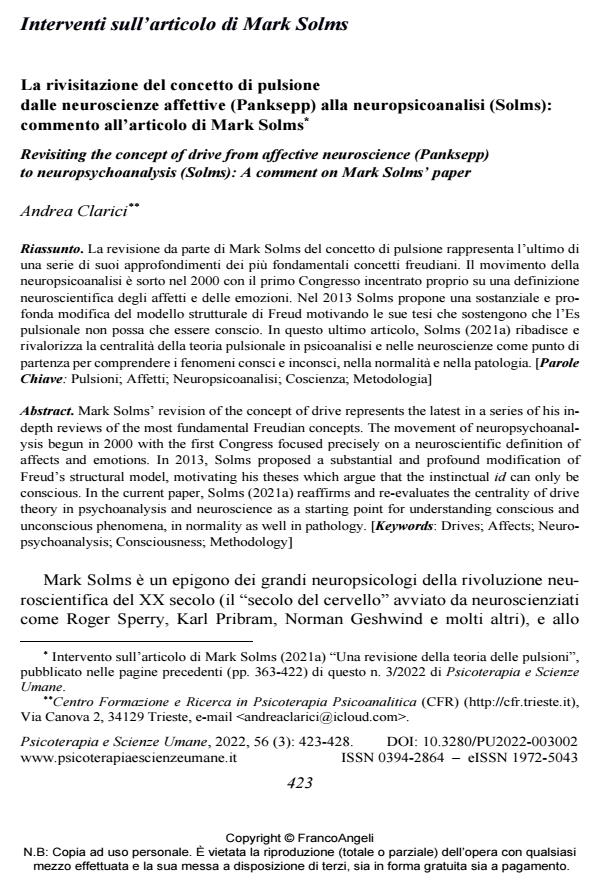Revisiting the concept of drive from affective neuroscience (Panksepp) to neuropsychoanalysis (Solms): A comment on Mark Solms’ paper
Journal title PSICOTERAPIA E SCIENZE UMANE
Author/s Andrea Clarici
Publishing Year 2022 Issue 2022/3
Language Italian Pages 6 P. 423-428 File size 34 KB
DOI 10.3280/PU2022-003002
DOI is like a bar code for intellectual property: to have more infomation
click here
Below, you can see the article first page
If you want to buy this article in PDF format, you can do it, following the instructions to buy download credits

FrancoAngeli is member of Publishers International Linking Association, Inc (PILA), a not-for-profit association which run the CrossRef service enabling links to and from online scholarly content.
Mark Solms’ revision of the concept of drive represents the latest in a series of his in-depth re-views of the most fundamental Freudian concepts. The movement of neuropsychoanalysis begun in 2000 with the first Congress focused precisely on a neuroscientific definition of affects and emotions. In 2013, Solms proposed a substantial and profound modification of Freud’s structural model, motivating his theses which argue that the instinctual id can only be conscious. In the current paper, Solms (2021a) reaffirms and re-evaluates the centrality of drive theory in psychoanalysis and neuroscience as a starting point for understanding conscious and unconscious phenome-na, in normality as well in pathology.
Keywords: Drives; Affects; Neuropsychoanalysis; Con-sciousness; Methodology
Andrea Clarici, Interventi sull’articolo di Mark Solms. La rivisitazione del concetto di pulsione dalle neuroscienze affettive (Panksepp) alla neuropsicoanalisi (Solms): commento all’articolo di Mark Solms in "PSICOTERAPIA E SCIENZE UMANE" 3/2022, pp 423-428, DOI: 10.3280/PU2022-003002